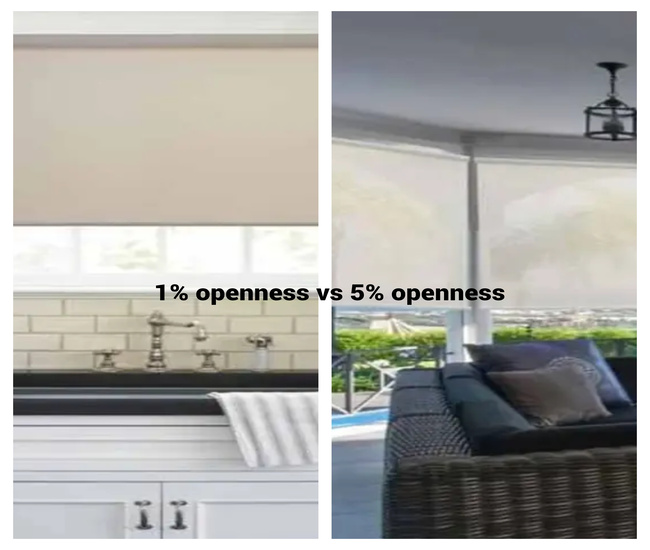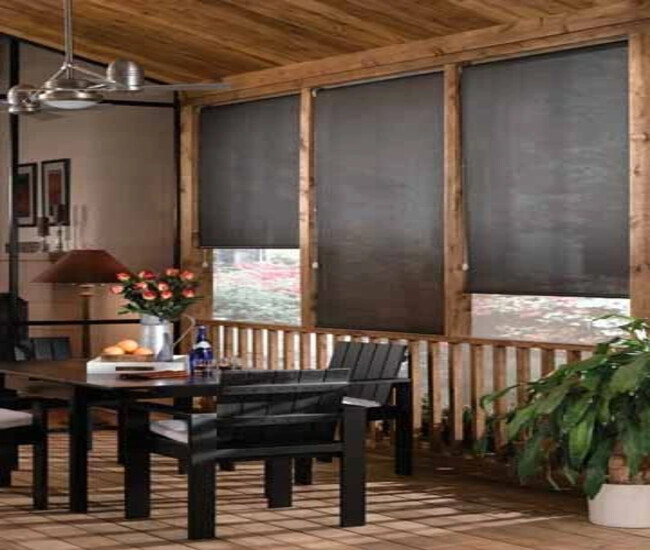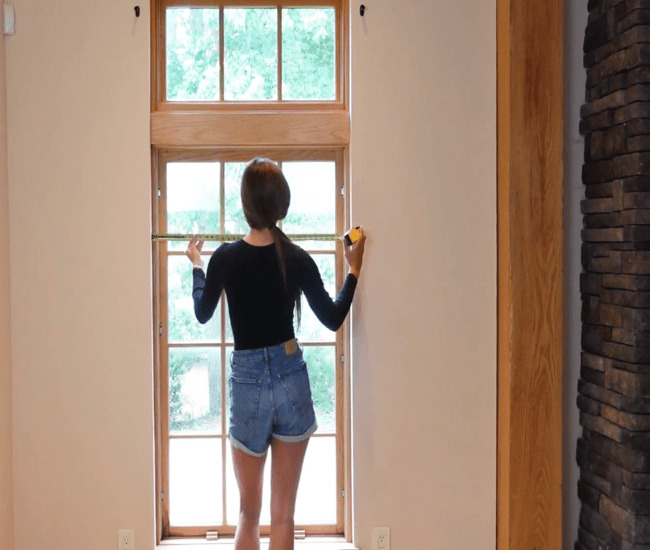Understanding Solar Shade Openness Factors: An A-Z Guide for Buyers

Unsure how different openness percentages or opacities of solar shades – 0%, 1%, 3%, 5%, 7%, 10%, 14%, 32% – directly affect natural light entry, UV protection, level of daytime privacy, see-through, glare reduction, and energy efficiency? This comprehensive blog post has got your covered!
Practically, choose a less open (more opaque) or more tightly woven fabric (1% to 7%) for a higher degree of light control, less visibility, more privacy, and better energy efficiency.
Conversely, select a looser weave (12% to 32%) for better see-through, lots of natural light, and significant glare reduction. Medium opacity, i.e., 7% to 10% is the most popular openness range for the perfect balance of features and functionalities.
We really encourage you to get free samples of solar shades (with free shipping!) to see how they look and work in your specific space. Or book a free consultation session with our experts.
Scroll on to dig deeper into solar shade openness comparison and make an informed decision when buying new solar shades for your needs and space.
What are Solar Shades?

Also called sun shades or sun blinds, solar shades are speciallized roll-up window coverings made from unique sun-blocking fabrics. They are typically less expensive, smarter, and easier to operate than light filtering double cellular blinds and room darkening drapes. Hailed as hardworking window treatments, solar shades filter the annoying light and give a more pleasurable outlook to your interior design style.
Cashing in on the energy efficiency of sun shades, you can significantly cut down on the cooling costs of your home. However, honeycomb blinds perform much better at insulation in both hotter and colder months.
What is the Openness Factor for Solar Shades?
Openness, also referred to as opacity level or openness percentage, is simply the measure of how tightly or closely yarns are woven, which directly reflects the sunlight trying to stream in through the fabric.
A lower openness value (1% to 3%) for these blinds means the fabric is more tightly woven to block view and light. Conversely, a higher openness value (10% to 14%) refers to a looser weave to allow more light and better see-through.
A custom solar shade with medium openness percentage (5% to 7%) is the best option to preserve view and prevent damage to your interior finishes and furnishing due to harsh UV rays.
Openness vs Opacity
Opacity percentage on sun blinds is the exact inverse of openness percentage, i.e., a more open blind is less opaque and vice versa. Openness (low percentage – 1-14%) defines the degree of openness or degree of the fabric weave, impacting light penetration, visibility, and privacy. On the other hand, opacity (high percentage 86-99%) emphasises the solar fabric’s ability to block UV rays, reduce glare, and enhance thermal regulation.
Merriam Webster dictionary defines opacity as “the quality or state of a body (fabric) that makes it impervious to the rays of light” or “the relative capacity of matter to obstruct the transmission of radiant energy”.
Why Consider the Openness Factor When Buying Solar Shades?
- Have rooms with a view?
- Want to savor your view of your garden in full bloom over the morning coffee without the blinding sun in your eyes?
- Don’t want to cover up the stunning outlook of a mountain range but worried about your fading furniture due to harsh rays?
- Want to reduce glare on the screens of your smart devices in your home office?
A single, direct answer to all these questions is: install solar shades with an appropriate openness factor. Solar blinds with the right opacity level offer an ultimate window treatment solution to preserve view, while keeping stifling sunlight and other irritating elements at bay.
Meaning of Various Openness Percentages for Solar Shades

- 0% Openness: 100% UV protection with complete daytime & nighttime privacy, total blackout effect, zero pollen penetration into your room, and some degree of noise cancellation
- 1% Openness: 99% protection against the harsh UV rays with room darkening effect and nearly perfect privacy
- 3% Openness: 97% UV control with dimly light environment in your sunroom
- 5% Openness: 95% UV rejection with evenly distributed, soft, filtered natural sunlight
- 7% Openness: 93% UV protection with good view of the outside and sufficient clarity to see through
- 10% Openness: 90% UV rejection with ample amounts of natural sunlight indoors, maximum visibility of the outside, and some degree of glare control
- 14% Openness: 86% UV blockage with best visibility to the outside and decent glare reduction
- 32% Openness: 68% UV control with compromise on privacy during the day and night – a sheer fabric-like performance
6 Things to Consider When Choosing the Right Openness % age for Solar Screen Fabric
- UV protection of floors, furniture, paintings, and, above all, your skin from skin cancer – According to Cancer Research UK, too much ultraviolet radiation can damage DNA in your skin. And that 9 in 10 cases of melanoma skin cancer in the UK can be prevented by sun protection with [preferably 1% open] solar shades.)
- Light control – 0% openness will work best in bedrooms and media rooms, while 5% or higher openness are a great choice for dining rooms, kitchens, home offices & kids’ play areas.
- Preserving view to the outside – 10-14% openness would be an ideal choice
- Visibility – higher openness – above 7% – will make your room brighter
- Privacy – 5% to 14% opennesses are good for daytime privacy. For nighttime privacy, select lower 1-3% opennesses.
- Energy savings – Tighter weave means less heat/cold penetration and better comfort and energy efficiency.
Other Factors to Consider
Here are some other factors to consider when choosing sun-blocking window covers:
- Child Safety & Legal Concerns – Always choose a pet- and child-safe, CPSC-approved option that 100% conform with the New US Federal regulations. New child safety regulations prohibit the sale or use of the most corded custom window coverings due to severe strangulation risks to the children.
- Environmental Protection – Always go for sustainably sourced, Greenguard-certified, eco-friendly solar blinds for windows, contributing your part to save humanity’s ecosystem.
- Luxury – For luxurious operation (opening, closing, positioning), we recommended motorized blinds with a wireless remote. An automatic solar blind offers a cordless, child-safe control system for homes with young children.
- Heat-Resistance – A durable, heat-resistant fabric won’t fade or suffer damage due to direct, prolonged exposure to the sunrays.
- Mounting Position – Go with an outside mount for better light coverage, UV rejection and glare prevention. Need a sleeker look? Install them inside your window recess.
- Dust-Repellent Fabric – Select a premium-quality, dust-repellent fabric that will be easier to clean and require lower maintenance costs.
- Window Size

Accurately measure the width, height, and depth (for an inside mount) of your window before buying a solar blind with the right opacity percentage.
Frequently Asked Questions
What is the best openness for solar shades?
Solar shades with medium openness percentages – 7-10% – are the best choices for enough natural light, significant view preservation, and sufficient UV control to prevent your room’s interior from UV damage.
These moderate opacity levels also block heat and allow sufficient clarity to see through. However, homeowners looking to increase their energy savings should go with lower 3-5% openness percentages.
What is the openness percentage for solar shades?
Solar shades come with a variety of percentages, ranging from 1% to 14%. In rare cases, solar screen fabrics also come with 0% and 32% opacity levels, representing total darkness and ample sheerness. Among these openness ratings, 7% to 10% is the perfect middle-of-the-road option for a perfect balance of the benefits of lower and higher openness levels.
These percentages provide adequate sun control, suitable view of the outdoors, and desired temperature regulation in summer.
What does 3 openness mean in solar shades?
3 openness in solar shades means 3 percent of sunlight will be allowed to stream in, while rejecting the rest of the 97%. This opacity level represents a tighter weave for better privacy and fade-protection.
What does 1 openness mean in solar shades?
1 openness in solar shades means nearly complete light control, as 99% of the UV rays are blocked out, with only 1% filtering in to provide a soft, diffused lighting atmosphere.
The closest (tightest) weave offers a minimum amount of visibility from the outside. So, the view will be faint, with much less clarity than the shades having higher openness percentages.
This model also provides greater insulation to control the heating and cooling costs of your home.
Need More Help?
We are ready to assist with choosing the best openness factors for the unique needs of different types of rooms in your home. We invite you to our 24/7 live chat. Or contact us at (800) 863-6109, or customerservice@affordableblinds.com. Explore ‘About Us’ section to learn about our expertise.
